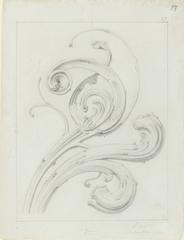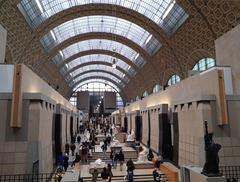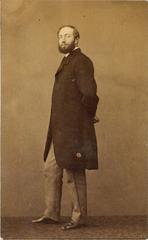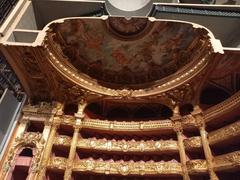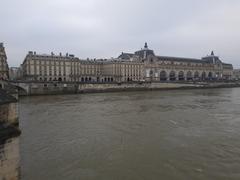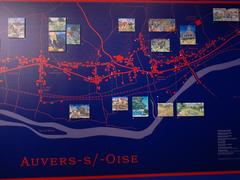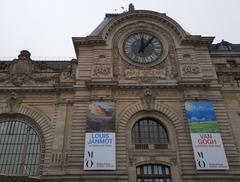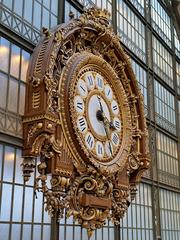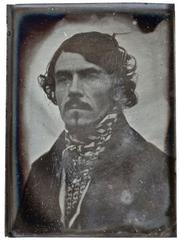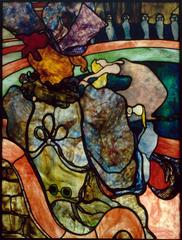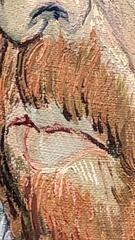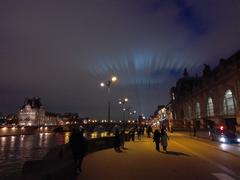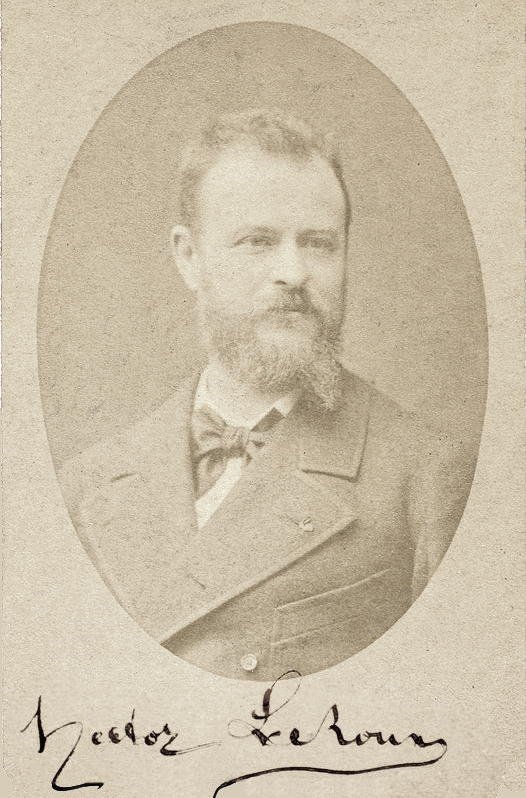
Musée d’Orsay Visiting Hours, Tickets, and Paris Historical Sites Guide
Date: 14/06/2025
Introduction
The Musée d’Orsay is a Parisian cultural icon, celebrated for its unparalleled collection of Impressionist and Post-Impressionist masterpieces. Set within the grand Beaux-Arts edifice of the former Gare d’Orsay railway station, the museum is an essential destination for art aficionados and history lovers alike. This guide provides detailed, up-to-date information on visiting hours, ticketing, accessibility, must-see highlights, and practical tips, ensuring a rewarding and efficient visit to this remarkable Paris historical site.
Historical Overview and Significance
From Railway Station to World-Class Museum
Originally constructed as the Gare d’Orsay for the 1900 Exposition Universelle, the building was hailed as a marvel of architecture and engineering. Designed by Victor Laloux, it featured an innovative iron and glass structure hidden behind a stately stone facade, symbolizing both modernity and tradition. For decades, the station served as a gateway to Paris before becoming obsolete due to the rise of longer trains and shifting transportation needs. Rather than face demolition, the Gare d’Orsay was preserved and transformed, opening as the Musée d’Orsay in 1986. This adaptive reuse not only salvaged a Parisian landmark but also provided a new home for France’s growing collection of 19th-century art (Britannica; Bonjour Paris; 175 Paris).
A Bridge Between Artistic Eras
The Musée d’Orsay was conceived to bridge the gap between the Louvre’s classical collections and the modern art of the Centre Pompidou, focusing on art from 1848 to 1914. Its galleries chronicle the radical transformations in painting, sculpture, photography, and decorative arts during an era of social and technological upheaval, showcasing the works of Monet, Van Gogh, Degas, Renoir, and many more. The museum’s location on the Left Bank, opposite the Tuileries Garden and near the Louvre and Musée de l’Orangerie, situates it at the heart of Paris’s cultural geography (Discover Walks; Musee d’Orsay Tickets).
Location and Getting There
Address: 1 Rue de la Légion d’Honneur, 75007 Paris, France
- Metro: Solférino (Line 12)
- RER: Musée d’Orsay (Line C)
- Bus: Lines 24, 63, 68, 69, 73, 83, 84, 94
- By Car: Limited parking nearby; public transport is recommended due to central Paris traffic.
Visiting Hours
- Tuesday–Sunday: 9:30 AM – 6:00 PM
- Thursday Late Opening: Until 9:45 PM (last admission 9:00 PM)
- Closed: Mondays, May 1, December 25
Tip: Arrive early, especially on weekends or during school holidays, or visit Thursday evenings for a quieter experience (TripSavvy).
Tickets and Entry
- Standard Admission: €16
- Audio Guide: €5 (recommended, available after ticket check)
- Free Admission: First Sunday of each month (expect higher crowds)
- Discounts: EU residents aged 18–25, free for under 18s and eligible categories
- Skip-the-Line: Strongly recommended, especially in peak season
- Paris Museum Pass: Valid for entry
Where to Buy:
Purchase tickets online via the official Musée d’Orsay website, or through Get Your Guide and Viator. Guided tours often include priority entry (Musee d’Orsay Tickets).
Accessibility
- Entrances: Multiple entrances with signage for different ticket types
- Wheelchair Access: Fully accessible; wheelchairs available free of charge
- Facilities: Adapted restrooms, elevators, and accessible routes throughout the museum
Navigating the Museum
- Chronological Layout: Artworks span from Realism to Impressionism and beyond, from ground to fifth floor
- Floor Plan: Available online and at the entrance
- Visit Duration: 2–4 hours recommended, depending on interest
Highlights of the Collection
Impressionist and Post-Impressionist Masterpieces
The Musée d’Orsay houses the largest collection of Impressionist and Post-Impressionist art in the world (Discover Walks; Snippets of Paris):
- Monet: “La Gare Saint-Lazare,” “Woman with a Parasol”
- Van Gogh: “Starry Night Over the Rhône,” “Self-Portrait,” “Bedroom in Arles”
- Degas: “The Ballet Class,” “Women Ironing,” “Little Dancer Aged Fourteen”
- Manet: “Le Déjeuner sur l’herbe,” “Olympia”
- Renoir: “Bal du Moulin de la Galette”
- Cézanne, Gauguin: Pioneering works bridging Impressionism and Modernism
Sculpture and Decorative Arts
- Central Nave: Features monumental sculptures by Rodin (“The Age of Bronze,” “The Gates of Hell” maquettes), Carpeaux, and Maillol
- Art Nouveau Galleries: Furniture and design by Émile Gallé, Hector Guimard
Architectural and Photographic Highlights
- Fifth Floor Clock: Offers panoramic views of Paris—a must for photographers
- Historic Architecture: Original Beaux-Arts features and grand nave (The Tourist Checklist)
Temporary Exhibitions and Events (2025)
- “L’art est dans la rue”: Illustrated posters by Bonnard, Toulouse-Lautrec (March–July 2025)
- Lucas Arruda: Atmospheric landscapes in dialogue with Monet (April–July 2025)
- Christian Krohg: Major retrospective
- John Singer Sargent: The Parisian Years: Major works rarely shown in France (Sept 2025–Jan 2026)
- Paul Troubetzkoy: Sculpture retrospective (Sept 2025–Jan 2026)
Check the official program for updates.
Visitor Amenities
- Cloakroom: Free for coats and small bags
- Dining:
- Belle Époque Restaurant (first floor)
- Café Campana (fifth floor, near the clock)
- Snack Bar (quick refreshments)
- Shops: Art books, prints, and souvenirs
- Wi-Fi: Free throughout the museum
- Restrooms: On every floor
Photography Policy
- Personal Photography: Allowed (no flash or selfie sticks)
- Best Spots: Fifth-floor clock and rooftop terrace (seasonal opening)
Family and Group Visits
- Family-Friendly: Workshops and educational activities available
- Group Tours: Book in advance for guided group experiences
Frequently Asked Questions (FAQ)
Q: How do I avoid crowds?
A: Visit early in the morning or Thursday evenings; book skip-the-line tickets.
Q: Is the museum suitable for children?
A: Yes, with educational workshops and family activities.
Q: Can I buy tickets on-site?
A: Yes, but online purchase is recommended to avoid long waits.
Q: Are there tours in languages other than French and English?
A: Some providers offer multi-language tours—check when booking.
Q: Is the museum accessible to visitors with disabilities?
A: Yes, with full accessibility and free admission for visitors with disabilities and their accompanying person.
Nearby Attractions
- Louvre Museum: Across the Seine, accessible via pedestrian bridge
- Tuileries Garden: Perfect for a stroll before or after your museum visit
- Musée de l’Orangerie: Renowned for Monet’s Water Lilies, nearby in the Tuileries
Tips for a Great Visit
- Download the Museum Map or App: For efficient navigation
- Wear Comfortable Shoes: The museum spans five floors
- Check for Renovations: The Orsay Grand Ouvert project may affect gallery access
- Plan for Refreshments: Use the café or restaurant for a relaxing break
- Capture the View: Don’t miss the iconic clock for photos
Conclusion
The Musée d’Orsay embodies the fusion of history, art, and architecture at the heart of Paris. Its transformation from a railway station to a world-class museum is a testament to the city’s commitment to cultural preservation and artistic innovation. With a thoughtfully curated collection, inspiring exhibitions, and visitor-friendly amenities, the museum offers a rewarding experience for all. Plan ahead, take advantage of guided tours and audio guides, and immerse yourself in the masterpieces that shaped modern art.
Call to Action:
Download the Audiala app for audio-guided tours, follow us on social media for the latest updates, and explore our related guides to Paris museums and historical sites for a truly enriching trip.
Sources
- Discover Walks
- Britannica
- Bonjour Paris
- 175 Paris
- Musee d’Orsay Tickets
- Snippets of Paris
- TripSavvy
- Sortir à Paris
- The Tourist Checklist
- Musée d’Orsay Press



